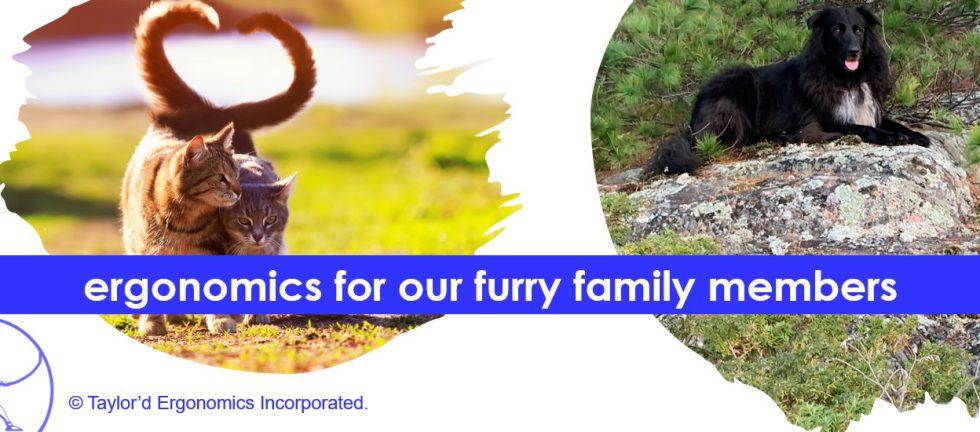We start out in life with “family” represented by parents and siblings. As we age, some of us are fortunate enough to add spouses, children, nieces, nephews, and even grandchildren. But at any age, we might also include our pets as family members. With Family Day approaching, I’ve been thinking about what “ergonomics” means to a pet.
Ergonomics is the art and science of fitting work to people, but we sometimes expand our study to include interfaces with “non-work” tasks in sport and leisure. So, if we consider “pets” as “people,” how can we make our pets’ environments “fit” them better? When do we think they might be uncomfortable? My dog’s name is “Ursa”, so I’ll share a little about what my “ergo dog” experiences.
-
- In the car. Ursa used to get car sick from looking out the side window. (I probably would too.) We used to feed her ginger cookies, which seemed to help. Now she sits in the middle and looks forward – much better. It’s safest for her and for us if she is seat-belted, so we have a special harness for that, like this one: Kurgo Impact Car Harness for Dogs (petvalu.ca). We also have blankets and seat protectors so she doesn’t get scolded for dirty paws after every hike.
- On the leash. Training is clearly the best solution here – if she didn’t pull, it wouldn’t hurt. We did find that the “Gentle Leader” was the best type of collar for Ursa, since when she pulls, her nose goes down, making it difficult (but not impossible) for her to run forward. Ren’s Pets (renspets.com)
- Grooming. Ursa will do almost anything to avoid grooming, so I’m pretty sure she doesn’t consider it “ergonomic”. A peanut-butter-covered lick mat, a good brush (so I don’t pull too hard on her fur and skin), and lots of patience are required to motivate her to the task. I usually groom her while sitting on the floor, but having her stand on a table would be more ergonomic for her human.
- Sleeping. Ursa has a nice soft bed, but she prefers the bed with humans in it, at least while she settles down. She usually moves to her own space after a few minutes. What would an “ergonomic pet bed” look like? I imagine it would be plenty large enough to allow sweet dreams about chasing squirrels. Ursa prefers to sleep in the cooler part of the room, near the open window. If you google-search “ergonomic dog bed” you’ll find all sorts of options.
- Eating. Ursa is a big dog, so we have raised bowls for her…less neck bending.
- Playing. I once purchased a chew toy that was marketed as “ergonomic”. (Ergonomists notice these things.) The toy was curved, so when she held down one end with a paw, the other end was conveniently raised for chewing.
- Exercise. It’s hard to get enough exercise in the winter when our country roads have no shoulders to walk on, but Ursa has learned to use the treadmill!
As pets age, they may need accommodations, such as ramps to help them climb in and out of vehicles, grippier floor surfaces, or even clothing and booties.
What about the human ergonomics associated with pets? What devices and practices make pets easier for people? Plenty of ergonomic pet accessories are available for us! Hands-free leashes, carriers for small pets, harnesses and lifejackets designed to make lifting a dog easier, brushes with contoured handles, better scoops for pet food…and don’t even get me started about aquariums!
When you celebrate Family Day this year, think about the comfort of your non-human family members. How could you improve ergonomics for them?


